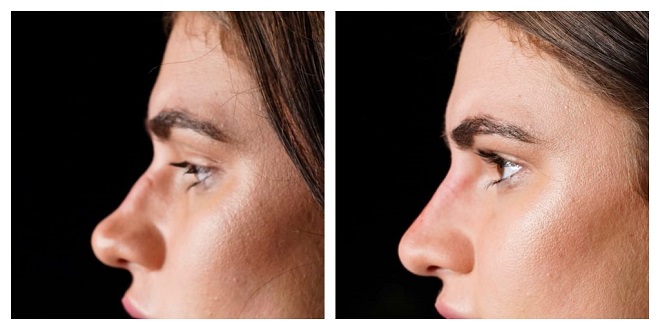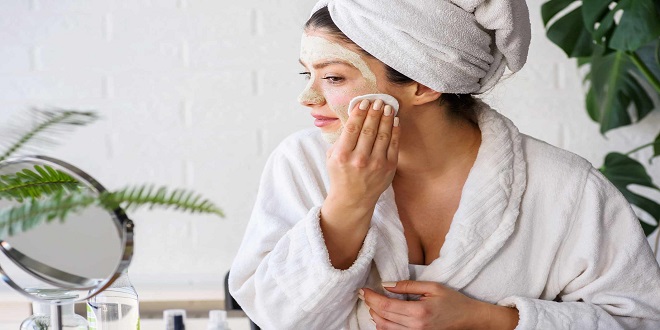Benefits Of A Liquid Rhinoplasty Vs Surgical Rhinoplasty?

It’s actually not at all simple to decide to have a rhinoplasty. It might be challenging to determine whether to have a nose aesthetic for a variety of reasons, such as persistent appearance following surgery or dread of surgery. Although traditional rhinoplasty surgery (Rhinoplasty) produces good results, many people are searching for non-surgical ways to enhance their appearance. In these cases, surgical nasal aesthetics sometimes referred to as nasal filling (Liquid Rhinoplasty), maybe a useful solution. It should be mentioned, though, that not everyone may find it to be the greatest option.
What Are the Advantages of a Surgical Rhinoplasty?
In order to get the appearance, you want, a surgical rhinoplasty may be the best option because the results are permanent. To achieve a more desirable, beautiful balance between your nose and your other features, your nose will be modified via personalized surgical operation. Many less appealing nose appearance issues can be fixed by a surgical rhinoplasty when it is done properly, which is very important.
- Large hump on the nose bridge
- Large, drooping nose tip
- Pointed, pinched nose appearance
- Overlarge nostrils
- Wide nostrils
- Uneven nose
- Flat nose bridge
Why Choose Surgical Rhinoplasty?
Patients may decide to have a surgical rhinoplasty using the conventional method for a number of reasons, including but not limited to;
- Because the effects are long-lasting, you may avoid making additional purchases.
- The nose job might be combined with another procedure, such as chin augmentation.
- There are practical advantages that might alter your way of living.
- You can get information from someone you know who has had surgery rhinoplasty.
- You already know roughly what to anticipate.
What Are the Advantages of Non-Surgical Rhinoplasty?
You have the option to change the look of your nose without surgery thanks to a non-surgical rhinoplasty. While more severe nose shape problems cannot be fixed with this procedure, many people who only want small alterations to their appearance can benefit greatly from it. The biggest benefit is that there are no incisions, scars, or recuperation periods, and results show up right away. The body will ultimately absorb the fillers, necessitating a retreatment procedure.
Why Choose Liquid Rhinoplasty?
The use of liquid rhinoplasty is becoming more and more common as patients learn about its numerous advantages. They include: It’s a far less expensive option than rhinoplasty surgery.
- Even 15 minutes might be needed to complete the process.
- It eliminates the requirement for surgery.
- The effects continue for up to 18 months and are nearly immediately noticeable.
- Anesthesia is not necessary.
- Thanks to the use of hyaluronidase injections, all outcomes are reversible.
- Due to the temporary results and non-invasive nature of the operation, liquid rhinoplasty can be considered as being far less dangerous and allowing you to experience the benefits of a new nose much sooner.
Can non-surgical rhinoplasty be considered safer than surgical rhinoplasty?
In non-surgical rhinoplasty, the patient’s nose is strategically injected with fillers to enhance its shape and features. Hyaluronic acid, a gel-like material that is naturally present in the human body, is typically used for dermal fillers; a few modest injections can result in significant changes in one’s nose’s look. Hyaluronic acid has developed a reputation as a secure, efficient, and advantageous surgical substitute.
Compared to non-surgical rhinoplasty, surgical rhinoplasty has more risks and necessitates a longer recovery period owing to swelling, bruising, and healing requirements. Only after a year, when the region has fully recovered, may a second operation be performed on the same location.
If difficulties arise after surgery, it may be more challenging or impossible to correct them since the physical structure of the nose may be permanently altered, leaving it smaller and more angular. Non-surgical rhinoplasty won’t permanently increase the nose’s size, but a straighter, more defined nose creates the appearance of a smaller nose that is in harmony with the rest of the face. In addition, the doctor can inject hyaluronidase to dissolve the filler if the results are not what you expected or a major issue develops.
Because the region is intricate, risks are present in both non-surgical and surgical rhinoplasty. Vascular issues can block the blood artery, which can result in blindness since some arteries at the end of the nose link to the retina of the eye. Such consequences are, however, extremely unusual and exceptional, particularly when handled by a board-certified, highly-trained therapist. Additionally, unlike surgical procedures, non-surgical rhinoplasty does not require any incisions, stitches, or anesthesia; virtually anybody may safely undergo the procedure.
Non-surgical rhinoplasty cost vs surgical nose job
The cost of a surgical rhinoplasty is highly high and is often a one-time investment. Many people might not reach their ideal look because of the appropriateness as there are restrictions when it comes to the nose dependent on the patient’s general anatomy. Higher risk and uncertainty have a high cost.
If the shape of the nose rather than its size is causing concern, non-surgical rhinoplasty is an excellent, affordable option to change the shape of the nose without invasive, expensive surgery. Non-surgical nose treatments are more affordable and a better option for many who want to experience the change.
Conclusion
Rhinoplasty is an excellent option to address this if you believe that your life has been negatively influenced by the form, size, or appearance of your nose. It can improve the natural aesthetic or restore your nose to how it was before the catastrophe.
Surgical rhinoplasty is perhaps the best option if you want long-lasting remedies for more complicated problems. However, liquid rhinoplasty is a reasonable substitute that produces immediate results that can be changed if you change your mind later. Whichever path you choose, it’s critical that you get advice from a board-certified aesthetic specialist who is familiar with both techniques.





